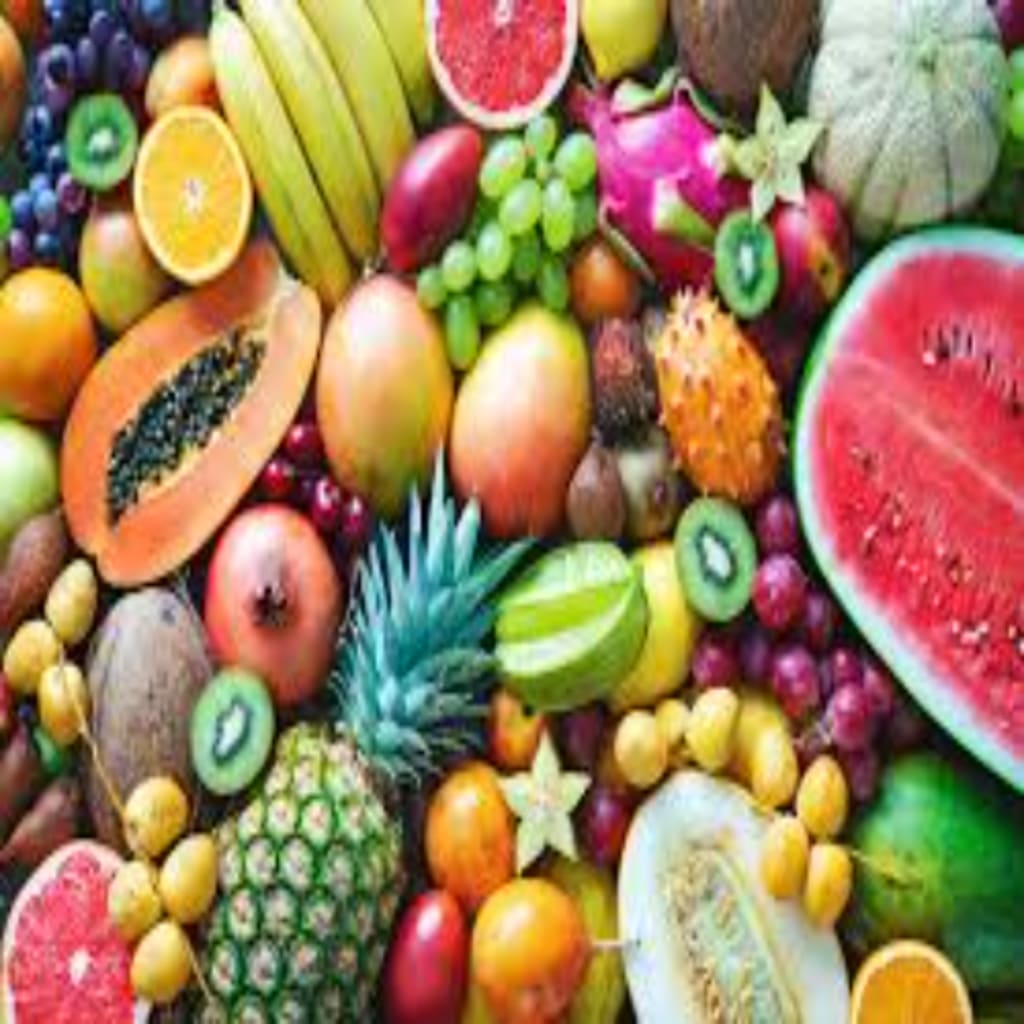Why Fruits are essential?
Eat fruits stay healthy

I. Introduction
A fruit is the mature ovary of a flowering plant, typically containing seeds, and is typically sweet or sour, and edible in the raw state. Fruits come in many different shapes, sizes, colors, and flavors, and can be classified in many different ways. Some of the most common types of fruits include berries, citrus fruits, stone fruits, melons, tropical fruits, and apples and pears.
II. Nutritional value
Fruits are an excellent source of vitamins, minerals, fiber, and antioxidants, which are essential for maintaining good health. Some of the key nutrients found in fruits include:
Vitamins: Fruits are particularly rich in vitamins A, C, and K, as well as folate and other B vitamins.
Minerals: Fruits provide a range of minerals, including potassium, calcium, and iron.
Fiber: Fruits are high in dietary fiber, which is important for maintaining a healthy digestive system and preventing constipation.
Antioxidants: Fruits are rich in antioxidants, which help to protect the body against damage from free radicals.
III. Types of fruits
Fruits can be classified in many different ways, but some of the most common types include:
Berries: Small, round fruits that grow on bushes or vines, such as strawberries, blueberries, and raspberries.
Citrus fruits: Fruits that are high in vitamin C, such as oranges, lemons, and limes.
Stone fruits: Fruits that have a single stone or pit in the center, such as peaches, plums, and cherries.
Melons: Fruits that have a hard, thick rind and a sweet, juicy flesh, such as watermelons and cantaloupes.
Tropical fruits: Fruits that are native to tropical regions, such as pineapples, bananas, and mangos.
Apples and pears: Fruits that are high in fiber and vitamin C, and are used in a wide variety of culinary applications.
IV. Harvesting and storage
Fruits are typically harvested when they are ripe and ready to eat. Different types of fruits have different seasons, and storage methods vary depending on the fruit's ripeness and shelf life. Some fruits can be stored at room temperature, while others need to be refrigerated or frozen.
V. Culinary uses
Fruits can be enjoyed in a variety of ways, including:
Fresh eating: Eating fruits raw, as a snack or as a part of a salad or a fruit platter
Cooking and baking: Adding fruits to baked goods, pies, jams, jellies and sauces
Juicing and preserving: Making fruit juice, smoothies, jams, jellies, and other preserves to enjoy later on.
VI. Conclusion
Fruits are an essential part of a healthy diet and offer a wide range of nutritional benefits. They come in many different varieties, each with its unique taste, texture, and nutritional profile. Fruits are versatile and can be enjoyed in many different ways, from fresh eating to cooking and preserving. Understanding the nutritional value, types, and culinary uses of fruits can help to make the most of their health benefits.
Fruits are an important part of a healthy diet and offer a wide range of nutritional benefits. They are a natural source of many essential vitamins, minerals, and other nutrients that are essential for maintaining good health.
Vitamins: Fruits are a rich source of vitamins, particularly vitamins A, C, and K. Vitamin A helps to maintain healthy vision, skin, and immune function. Vitamin C is essential for the production of collagen, which helps to keep skin, tendons, and blood vessels healthy. Vitamin K helps in blood clotting and maintaining strong bones. Fruits also provide other B vitamins, such as folate, which is important for cell growth and development.
Minerals: Fruits contain a variety of minerals that are essential for good health. Potassium is an important mineral that helps to regulate blood pressure, heart function, and muscle function. Calcium and iron are also present in fruits and are important for strong bones and healthy blood, respectively.
Fiber: Fruits are an excellent source of dietary fiber, which is important for maintaining a healthy digestive system and preventing constipation. Fiber also helps to control blood sugar levels and lower cholesterol.
Antioxidants: Fruits are rich in antioxidants, which are natural compounds that help to protect the body against damage from free radicals. Free radicals can cause damage to cells, leading to chronic diseases. Antioxidants found in fruits include flavonoids, carotenoids, and polyphenols. These antioxidants have been linked to a reduced risk of chronic diseases such as cancer, heart disease.
About the Creator
Enjoyed the story? Support the Creator.
Subscribe for free to receive all their stories in your feed. You could also pledge your support or give them a one-off tip, letting them know you appreciate their work.






Comments
There are no comments for this story
Be the first to respond and start the conversation.